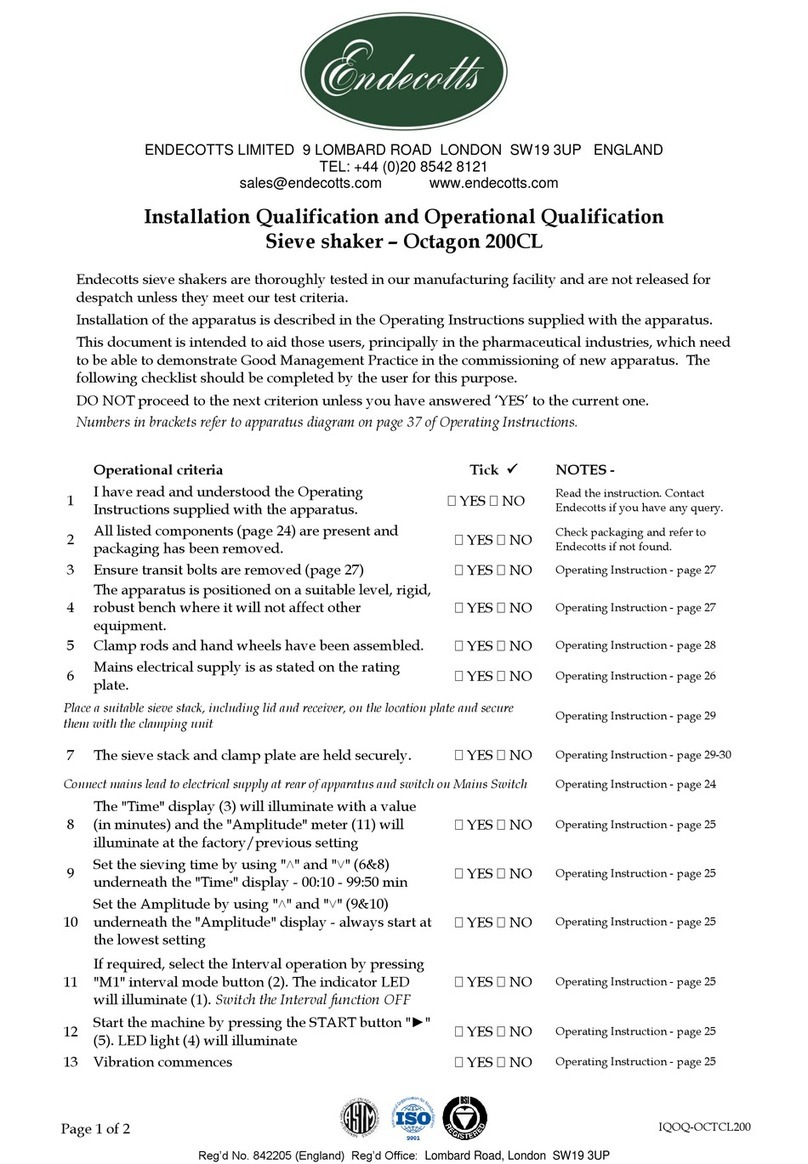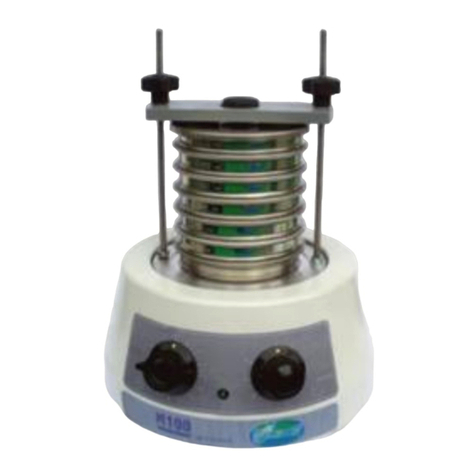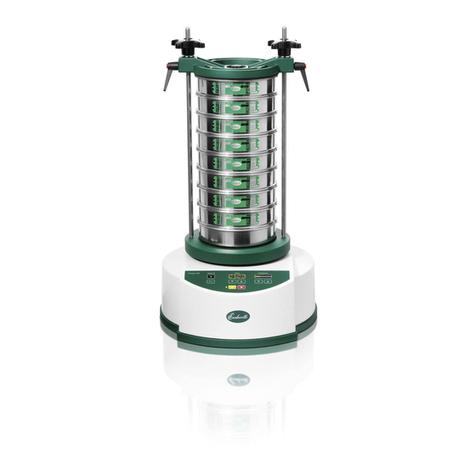
Unpacking
________________________________________________
The shaker should be set up according to the following procedure and
the diagram opposite. The Internal packing and following list of items
should be removed from the case and checked before the EFL 2000 is
removed.
1 off Test Sieve Shaker EFL 2000
2 off M12 Plated Lock Nuts
2 off M12 Plated Plain Washers
2 off Clamping Handwheels
2 off Large Plain Clamp Washers
2 off Clamping Handwheels
1 off Clamp Plate Assembly complete
with Locking Assemblies
4 off Anti-Vibration Mounts
4 off M10 Large Washers
1 off Mains Cable
1 off Instruction Manual
EFL 2000/1
2 off Short Clamp Rods SA 564/3
2 off Standard Clamp Rods SA 564/1
EFL 2000/2
2 off Short Clamp Rods SA 564/3
2 off Long Clamp Rods SA 564/2
Keeping top opening of packing case uppermost unscrew transit bolts
from underside of case (placing blocks under packing will assist
this operation). Lift the shaker from packing case carefully. The anti-
vibration mounts should be screwed into the four tapped holes provided
on the underside of the underside of the machine and adjust the feet to
level the shaker then tighten the lock nuts.
- 2 -


























